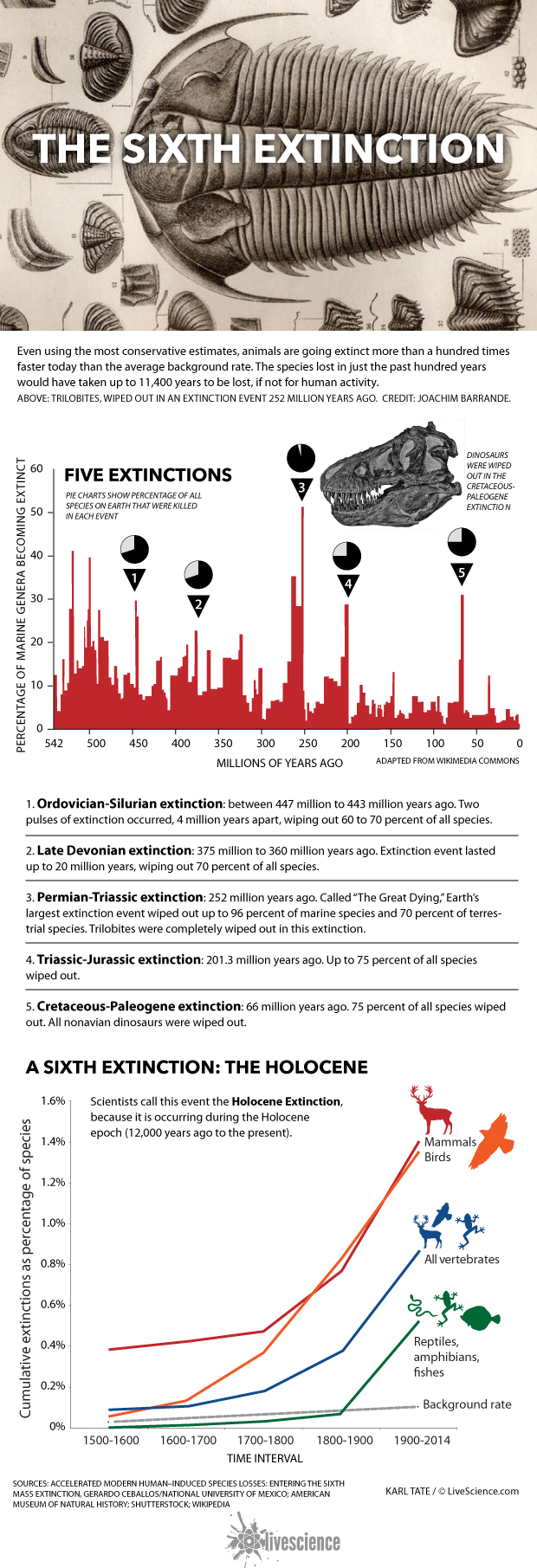The New Dying: How Human-Caused Extinction Affects the Planet (Infographic)

Even using the most conservative estimates, animals are going extinct more than a hundred times faster today than the average background rate. The species lost in just the past hundred years would have taken up to 11,400 years to be lost, if not for human activity.
FIVE EXTINCTIONS
1. Ordovician-Silurian extinction: between 447 million to 443 million years ago. Two pulses of extinction occurred, 4 million years apart, wiping out 60 to 70 percent of all species.
2. Late Devonian extinction: 375 million to 360 million years ago. Extinction event lasted up to 20 million years, wiping out 70 percent of all species.
3. Permian-Triassic extinction: 252 million years ago. Called “The Great Dying,” Earth’s largest extinction event wiped out up to 96 percent of marine species and 70 percent of terrestrial species. Trilobites were completely wiped out in this extinction.
4. Triassic-Jurassic extinction: 201.3 million years ago. Up to 75 percent of all species wiped out.
5. Cretaceous-Paleogene extinction: 66 million years ago. 75 percent of all species wiped out. All nonavian dinosaurs were wiped out.
Scientists call the current event the Holocene Extinction, because it is occurring during the Holocene epoch (12,000 years ago to the present).
Sign up for the Live Science daily newsletter now
Get the world’s most fascinating discoveries delivered straight to your inbox.

